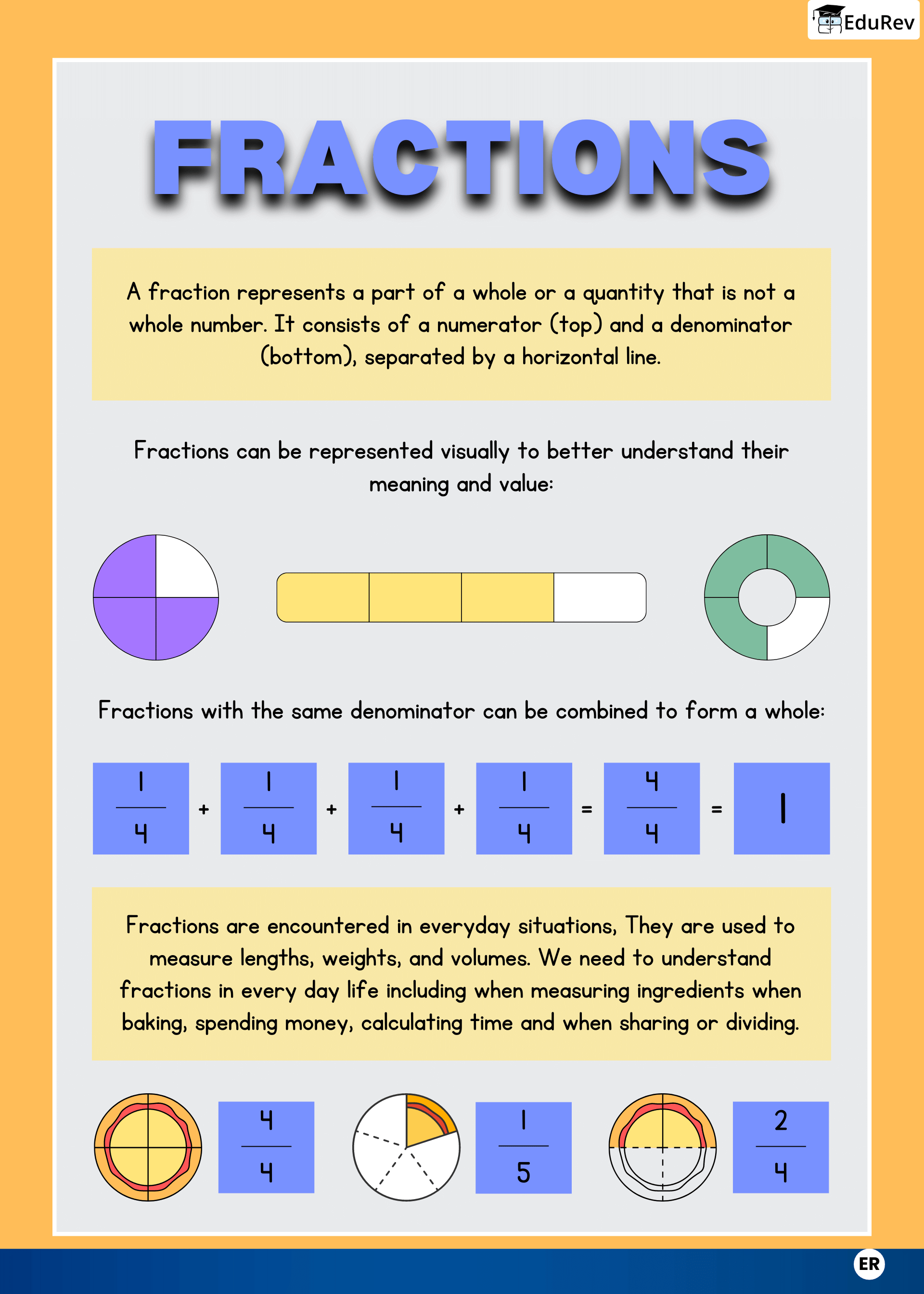Class 5 Exam > Class 5 Notes > Mathematics for Class 5: NCERT > Let's Learn: Fractions
Let's Learn: Fractions | Mathematics for Class 5: NCERT PDF Download

The document Let's Learn: Fractions | Mathematics for Class 5: NCERT is a part of the Class 5 Course Mathematics for Class 5: NCERT.
All you need of Class 5 at this link: Class 5
|
31 videos|192 docs|41 tests
|
FAQs on Let's Learn: Fractions - Mathematics for Class 5: NCERT
| 1. What is a fraction and how is it represented? |  |
Ans. A fraction is a mathematical expression that represents the division of one quantity by another. It consists of two parts: the numerator (the top number) and the denominator (the bottom number). For example, in the fraction ¾, 3 is the numerator, and 4 is the denominator, indicating that 3 parts of a whole are being considered out of 4 equal parts.
| 2. How do you add fractions with different denominators? |  |
Ans. To add fractions with different denominators, you first need to find a common denominator. This is typically the least common multiple (LCM) of the denominators. Once you have a common denominator, convert each fraction to an equivalent fraction with this denominator. Then, add the numerators while keeping the denominator the same. For example, to add ⅓ and ¼, the LCM of 3 and 4 is 12. So, convert ⅓ to ⁴⁄₁₂ and ¼ to ³⁄₁₂, then add them to get ⁷⁄₁₂.
| 3. What is the difference between proper and improper fractions? |  |
Ans. A proper fraction is a fraction where the numerator is less than the denominator, such as ⅖. An improper fraction, on the other hand, is where the numerator is greater than or equal to the denominator, like ⁵⁄₄. Improper fractions can also be expressed as mixed numbers, which combine a whole number with a proper fraction, such as 1⅓ for ⁴⁄₃.
| 4. How do you convert a fraction to a decimal? |  |
Ans. To convert a fraction to a decimal, divide the numerator by the denominator. For example, to convert ¾ to a decimal, you would perform the division 3 ÷ 4, which equals 0.75. This method allows you to express the fraction in decimal form accurately.
| 5. What are equivalent fractions and how can you find them? |  |
Ans. Equivalent fractions are different fractions that represent the same value or proportion of a whole. To find equivalent fractions, you can multiply or divide the numerator and denominator of a fraction by the same non-zero number. For instance, ½ is equivalent to ²⁄₄ because both represent the same portion of a whole when simplified.
Related Searches

















